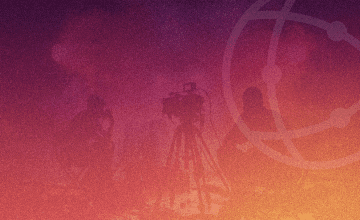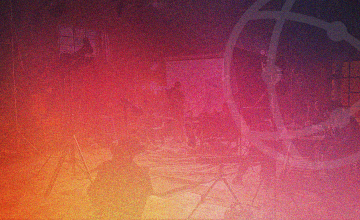Quentin Tarantino’s relentless pursuit of authenticity transformed Los Angeles into a vibrant 1969 backdrop for ‘Once Upon a Time in Hollywood.’ Through strategic negotiations and a surprise appearance at a crucial meeting, Tarantino secured the necessary support to bring his vision to life.
The following insights are drawn from The Making of Quentin Tarantino’s Once Upon a Time in Hollywood, published by Insight Editions and set to release on October 28.
During a pivotal moment in production, Quentin Tarantino turned to his location manager, Rick Schuler, asking, “Rick, how are you doing with getting Hollywood Boulevard for me?” Schuler responded confidently, but Quentin knew that merely being “doing well” was not enough. The film, a love letter to Los Angeles and Hollywood, required an authentic backdrop, and Tarantino was determined to recreate the city as it was in 1969.
Schuler had been negotiating with the California Film Commission for weeks, and under Tarantino’s watchful eye, he admitted he was “80 percent there.” Quentin offered his assistance, eager to ensure the film’s success. Production designer Barbara Ling was also anxious about the logistics, as Schuler sought permission to shut down eight blocks of Hollywood Boulevard. Ling recalled the pushback from city officials, who were resistant to the idea, stating, “Eight blocks? No way!”
To leverage Tarantino’s passion, Schuler proposed a meeting with the Hollywood neighborhood council, suggesting that Quentin could speak about the project. On the day of the meeting, Schuler surprised both Quentin and first assistant director Bill Clark by making Tarantino the unexpected star of the pitch. To keep the surprise, they temporarily hid him in a windowless broom closet.
As Schuler presented the project to the council, he introduced Quentin, who had been waiting in the closet for nearly an hour. The council members were taken aback as Tarantino spoke passionately about his Hollywood roots and the importance of their support for his film. The result? Unanimous approval to shut down Hollywood Boulevard, allowing Ling and her team to begin transforming the area back to its 1969 glory.
Quentin’s vision was clear: he wanted to create a realistic portrayal of Hollywood, avoiding digital effects in favor of practical locations. Ling, who shared Tarantino’s enthusiasm, understood the importance of authenticity. She recalled his insistence on using real locations, stating, “I don’t ever want to be standing in front of a greenscreen or a bluescreen ever.”
As production progressed, the challenges of location-heavy filming became apparent. Schuler noted that mentioning Tarantino’s name often opened doors, but the financial implications of shutting down city blocks were significant. Producer David Heyman suggested scaling back from eight blocks to three, expecting resistance from Tarantino. Surprisingly, Heyman found Quentin to be accommodating, describing him as “dreamy” and easy to work with.
Ling, a lifelong Angeleno, was excited to recreate the Hollywood of her youth. She reminisced about her own experiences in the city, which mirrored Tarantino’s vision. The production team faced the challenge of negotiating fees with business owners, as the allure of having stars like Leonardo DiCaprio and Brad Pitt on set raised expectations.
DiCaprio, who had a deep connection to the changing landscape of Los Angeles, expressed his awe at the transformation. He invited his father to visit the set, knowing he would appreciate the nostalgic atmosphere. Meanwhile, Tarantino’s meticulous attention to detail extended to every aspect of the film, including a scene where Sharon Tate, played by Margot Robbie, visits a bookshop that Tarantino had meticulously recreated.
As filming commenced, the excitement grew. Tarantino’s ability to engage with the crowd made filming on the streets of Hollywood a unique experience. Clark and Schuler organized production assistants to manage the crowds, ensuring safety while allowing Tarantino to connect with fans.
At one of his favorite haunts, Musso Frank Grill, Tarantino enjoyed a martini while discussing the film’s logistics. The restaurant, a historic location, required minimal changes to fit the 1969 aesthetic, showcasing the seamless collaboration between Tarantino and the venue.
As the production team scouted locations, they faced challenges in finding the perfect houses for key scenes. Clark and cinematographer Bob Richardson took matters into their own hands, driving through the Hollywood Hills until they discovered a promising cul-de-sac. Their persistence paid off when they found a house that fit Tarantino’s vision, complete with a swimming pool reminiscent of the character Rick Dalton‘s.
Ultimately, Tarantino’s dedication to authenticity and his ability to rally support from the community played a crucial role in bringing Once Upon a Time in Hollywood to life. The film’s success is a testament to the collaborative spirit of those involved and the magic of Hollywood itself.
For more behind-the-scenes insights, check out The Making of Quentin Tarantino’s Once Upon a Time in Hollywood, available on October 28.
Disclaimer: This article has been auto-generated from a syndicated RSS feed and has not been edited by Vitrina staff. It is provided solely for informational purposes on a non-commercial basis.






























